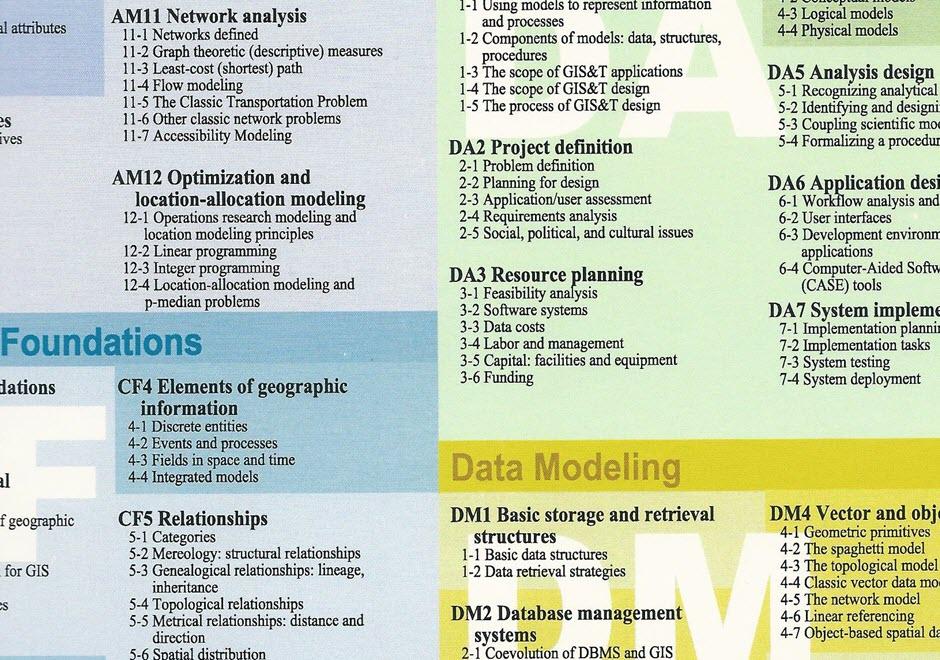CV-14 - Terrain Representation

- Describe situations in which methods of terrain representation (e.g., shaded relief, contours, hypsometric tints, block diagrams, profiles) are well suited
- Create a map that represents both slope and aspect on the same map using the Moellering-Kimerling coloring method
- Explain how maps that show the landscape in profile can be used to represent terrain
- Differentiate 3-D representations from 21/2-D representations
- Describe situations in which methods of terrain representation are poorly suited



CV-17 - Mapping Time